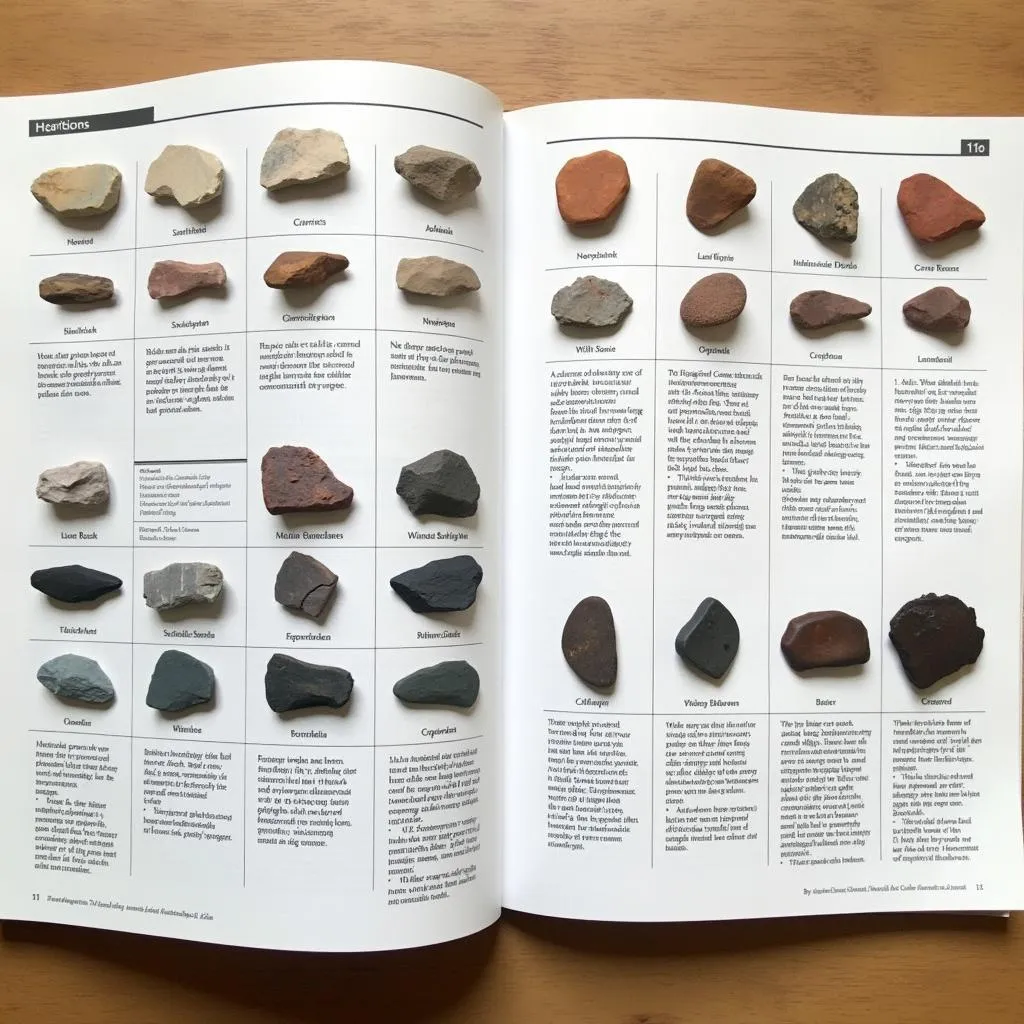Have you ever held a shimmering piece of amethyst or a chunk of coal-black obsidian and wondered what makes them so different? The answer lies in the fascinating world of geology and the properties of rocks. While several factors contribute to a rock’s appearance, its color is primarily determined by its mineral composition.
Minerals: The Building Blocks of Color
Rocks are essentially aggregates of one or more minerals. Each mineral possesses a unique chemical composition and crystalline structure, giving it distinctive physical properties, including color. Imagine minerals as tiny paint palettes, each contributing its hue to the overall color of the rock.
For instance, the presence of iron oxide, a common mineral, can result in vibrant reds, yellows, and browns, as seen in sandstone and many types of granite. On the other hand, quartz, a mineral composed of silicon and oxygen, is typically colorless or white, contributing to the light shades of rocks like quartzite.
 Minerals Determine Rock Color
Minerals Determine Rock Color
Trace Elements: A Dash of Color Magic
Beyond the primary minerals, minute amounts of other elements, known as trace elements, can dramatically influence a rock’s color. Think of them as the subtle spices in a recipe, adding unexpected depth and complexity.
A prime example is the gemstone emerald, a green variety of the mineral beryl. Its captivating green hue is attributed to trace amounts of chromium and vanadium within the beryl’s structure. Similarly, the presence of manganese can impart pink and purple hues, as seen in amethyst and rose quartz.
Other Factors Affecting Rock Color:
While mineral composition is the primary determinant of rock color, other factors can also play a role:
- Texture: The size, shape, and arrangement of mineral grains can influence how light interacts with the rock, affecting its perceived color. Fine-grained rocks tend to appear duller than coarse-grained rocks, where individual mineral crystals are visible.
- Impurities: The presence of impurities like organic matter or other foreign substances can alter a rock’s color. For example, coal’s black color results from high concentrations of carbon.
- Weathering and Alteration: Exposure to weathering agents like water, wind, and temperature changes can alter the surface of rocks, leading to color changes. Oxidation, a common weathering process, can create rusty-brown coatings on iron-rich rocks.
 Weathering's Impact on Rock Color
Weathering's Impact on Rock Color
Conclusion: Unraveling the Color Palette of Rocks
Understanding the connection between a rock’s mineral composition and its color unlocks a deeper appreciation for the Earth’s geological diversity. By observing a rock’s color, we gain valuable clues about its formation, history, and the forces that have shaped it over millions of years. So, the next time you encounter a colorful rock, take a moment to appreciate the fascinating interplay of minerals, elements, and geological processes that have culminated in its unique appearance.
FAQs:
1. Can a rock change color over time?
Yes, weathering and alteration processes can cause changes in a rock’s surface, leading to color variations over time.
2. Why are some rocks multicolored?
Multicolored rocks typically form from a combination of different minerals, each contributing its own color to the overall appearance.
3. What is the rarest rock color?
While there isn’t a single “rarest” color, certain colors like vibrant blue and purple are less common in rocks due to the scarcity of specific minerals responsible for those hues.
4. Are all rocks with the same color made of the same minerals?
Not necessarily. Different mineral combinations can sometimes result in similar colors, making it essential to consider other factors for accurate identification.
5. How can I learn more about identifying rocks based on their properties?
Numerous resources are available, including field guides, online databases, and geology courses.
 Rock Identification Guide
Rock Identification Guide
Need help deciphering the colors of your rock collection? Contact our experts at [Phone Number], email us at [Email Address], or visit us at [Address] in Hanoi. Our team is available 24/7 to assist you with all your rock-related inquiries!
